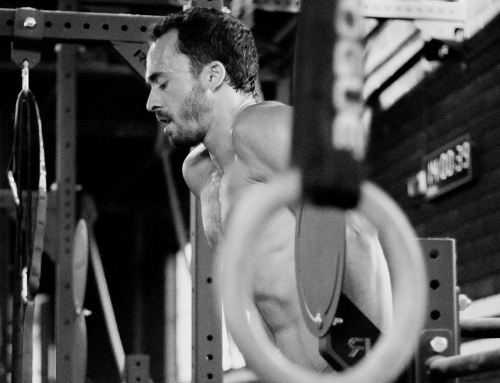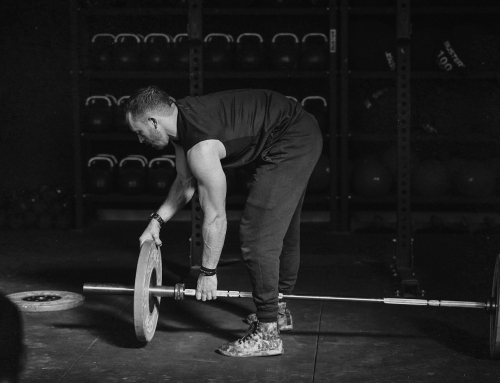Desde hace tiempo se investiga los efectos que pueden tener los suplementos proteicos de suero de leche e hydrolizado de leche, en los Atletas. Su recomendación por nutricionistas deportivos es muy común, en muchos casos , es necesaria. Pues recientemente se ha publicado un estudio, (Whey protein hydrolysate boosts glycogen storage in muscle cells) en el que muestra, como el suplemento de proteína hydrolizada de suero de leche al ingerirlo, se mueve hacia las membranas de las células musculares y absorbe la mayor cantidad posible de glucosa de la sangre . Los atletas de resistencia hacen uso de este principio cuando se cargan de hidratos de carbono después de un gran entrenamiento. Este dato es muy importante, ya que muestra como la mayor parte de la glucosa que esta circulando en la sangre en la primera hora después de una sesión de entrenamiento termina en las células musculares , y menos en las células lípidas (grasas). Se observa otro efecto el cual es beneficiosos para las personas con diabetes, pues la proteina hydrolizada , no estimularía la insulina, de forma significante, o de una manera negativa.

Las siguientes figuras muestran que en ambas (ratas activas e inactivas) la cantidad de glucógeno fue mayor en los animales que habían sido dados de proteína de suero hidrolizado.

Referencias:
Estudio: http://www.ncbi.nlm.nih.gov/pmc/articles/PMC3758293/
1. Moura CS, Lollo PCB, Morato PN, Carneiro EM, Amaya-Farfan J (2013) Whey protein hydrolysate enhances the exercise-induced heat shock protein (HSP70) response in rats. Food Chem 136: 1350–1357. [PubMed]
2. Lollo PCB, Silva LBC, Batista TM, Morato PN, Moura CS, et al. (2012) Effects of whey protein and casein plus leucine on diaphragm the mTOR pathway of sedentary, trained rats. Food Res 49: 416–424.
3. Nery-Diez AC, Carvalho IR, Amaya-Farfan J, Abecia-Soria MI, Miyasaka CK, et al. (2010) Prolonged ingestion of prehydrolyzed whey protein induces little or no change in digestive enzymes, but decreases glutaminase activity in exercising rats. J Med Food 13: 992–998. [
PubMed]
4. Morifuji M, Sakai K, Sanbongi C, Sugiura K (2005) Dietary whey protein downregulates fatty acid synthesis in the liver, but upregulates it in skeletal muscle of exercise-trained rats. Nutrition 21: 1052–1058. [
PubMed]
5. Meisel H (2005) Biochemical properties of peptides encrypted in bovine milk proteins. Curr Med Chem 12: 1905–1919. [
PubMed]
6. Morifuji M, Koga J, Kawanaka K, Higuchi M (2009) Branched-chain amino acid-containing dipeptides, identified from whey protein hydrolysates, stimulate glucose uptake rate in L6 myotubes and isolated skeletal muscles. J Nutr Sci Vitaminol (Tokyo) 55: 81–86. [
PubMed]
7. Tassi EM, Amaya-Farfan J, Azevedo JRM (1998) Hydrolyzed α-lactalbumin as a source of protein to the exercising rat. Nutrition Res 18: 875–881.
8. Faria IC, Nery-Diez ACC, Lollo PCB, Amaya-Farfan J, Ferreira CS (2012) Myocardial glycogen is increased in sedentary rats fed milk whey protein digests when brought to exhaustion. African Journal of Biotech 11: 2402–2405.
9. Lollo PCB, Amaya-Farfan J, Carvalho-Silva LB (2011) Physiological and physical effects of different milk protein supplements in elite soccer players. J Hum Kinet 30: 49–57. [
PMC free article] [
PubMed]
10. Morifuji M, Sakai K, Sanbongi C, Sugiura K (2005) Dietary whey protein increases liver and skeletal muscle glycogen levels in exercise-trained rats. Br J Nutr 93: 439–445. [
PubMed]
11. Pimenta FMV, Abecia-Soria MI, Auler F, Amaya-Farfan J (2006) Physical performance of exercising young rats fed hydrolysed whey protein at a sub-optimal level. Int Dairy J 16: 984–991.
12. Jeukendrup AE (2011) Nutrition for endurance sports: marathon, triathlon, and road cycling. J Sports Sci. 29 Suppl 1S91–99. [
PubMed]
13. Mueckler M (1994) Facilitative glucose transporters. Eur J Biochem 219: 713–725. [
PubMed]
14. Gaster M, Handberg A, Beck-Nielsen H, Schroder HD (2000) Glucose transporter expression in human skeletal muscle fibers. Am J Physiol Endocrinol Metab 279: E529–538. [
PubMed]
15. Kuo CH, Hwang H, Lee MC, Castle AL, Ivy JL (2004) Role of insulin on exercise-induced GLUT-4 protein expression and glycogen supercompensation in rat skeletal muscle. J Appl Physiol 96: 621–627.[
PubMed]
16. Christ-Roberts CY, Mandarino LJ (2004) Glycogen synthase: key effect of exercise on insulin action.Exerc Sport Sci Rev 3290–94. [
PubMed]
17. Kuo CH, Browning KS, Ivy JL (1999) Regulation of GLUT4 protein expression and glycogen storage after prolonged exercise. Acta Physiol Scand 165: 193–201. [
PubMed]
18. Reeves PG, Nielsen FH, Fahey GC (1993) AIN-93 purified diets for laboratory rodents: final report of the American Institute of Nutrition ad hoc writing committee on the reformulation of the AIN-76A rodent diet. J Nutr 123: 1939–1951. [
PubMed]
19. Lo S, Russell JC, Taylor AW (1970) Determination of glycogen in small tissue samples. J Appl Physiol 28: 234–236. [
PubMed]
20. Okamoto MM, Anhê GF, Sabino-Silva R, Marques MFSF, Freitas HS, et al. . (2011) Intensive insulin treatment induces insulin resistance in diabetic rats by impairing glucose metabolism-related mechanisms in muscle and liver. Journal of Endocrinol 211, 55–64. [
PubMed]
21. Lowry OH, Rosebrough NJ, Farr AL, Randall RJ (1951) Protein measurement with the Folin phenol reagent. J Biol Chem 193: 265–275. [
PubMed]
22. White JA, Hart RJ, Fry JC (1986) An evaluation of the Waters Pico-Tag system for the amino-acid analysis of food materials. J Automat Chem 8: 170–177. [
PMC free article] [
PubMed]
23. Morifuji M, Kanda A, Koga J, Kawanaka K, Higuchi M (2011) Preexercise ingestion of carbohydrate plus whey protein hydrolysates attenuates skeletal muscle glycogen depletion during exercise in rats.Nutrition 27: 833–837. [
PubMed]
24. MacLean PS, Zheng D, Dohm GL (2000) Muscle glucose transporter (GLUT 4) gene expression during exercise. Exerc Sport Sci Rev 28: 148–152. [
PubMed]
25. Zorzano A, Palacín M, Gumá A (2005) Mechanisms regulating GLUT 4 glucose transporter expression and glucose transport in skeletal muscle. Acta Physiol Scand 183: 43–58. [
PubMed]
26. Power O, Hallihan EA, Jakeman EP (2009) Human insulinotropic response to oral ingestion of native and hydrolysed whey protein. Amino acids 37: 333–339. [
PubMed]
27. Pal S, Ellis V (2010) The acute effects of four protein meals on insulin, glucose, appetite and energy intake in lean men. Br J Nutr 104: 1241–1248. [
PubMed]
28. Carneiro EM, Latorraca MQ, Araujo E, Beltra M, Oliveras MJ, et al. (2009) Taurine supplementation modulates glucose homeostasis and islet function. J Nutr Biochem 20: 503–511.[
PubMed]
29. Batista TM, Ribeiro RA, Amaral AG, de Oliveira CA, Boschero AC, et al. (2012) Taurine supplementation restores glucose and carbachol-induced insulin secretion in islets from low-protein diet rats: involvement of Ach-M3R, Synt 1 and SNAP-25 proteins. J Nutr Biochem 23: 306–312. [
PubMed]
30. Brancaccio P, Maffulli N, Buonauro R, Limongelli FM (2008) Serum enzyme monitoring in sports medicine. Clin Sports Med
27: 1–18, vii. [
PubMed]





